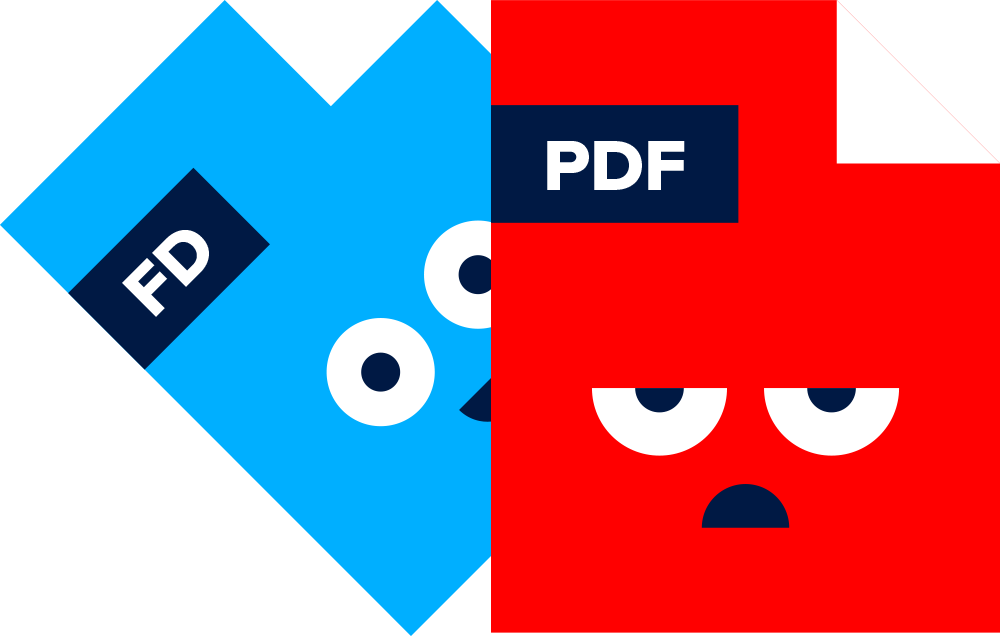We know that these days, capturing people's attention online takes a whole lot of work. You’ve got to keep up with the abundance of emerging content marketing trends, new formats, and technologies in order to keep the content wheel turning. It’s tough out there. Not to worry, we’ve got years of experience creating impactful online magazines and we are more than happy to share our insights with you.
By the end of this post, you'll have plenty of fresh magazine ideas and practical solutions to help you create compelling, page-turning content that your readers will enjoy.
How can I breathe life into my digital magazine?
First of all, if you really want to revamp your magazine and take it to the next level, one way to do so is by turning away from PDF formats and creating a digital magazine using a media-rich HTML experience.
HTML-based magazines are digital magazines that use the same technology websites depend on — HTML, CSS, and JavaScript. They’re optimized for digital platforms and can be easily accessed on mobile devices. Doing this lets you bring your content to life with interactive elements such as videos, animations, and graphics.
By breathing new life into your magazine and using a new format, you can stay ahead of the curve and offer your readers a cutting-edge experience that will keep them coming back for more.
Benefits of online magazines vs. legacy formats
With the expansion of social media, nowadays, people are accustomed to receiving engaging information quickly. As people no longer consume media from one single device, your content should be engaging for readers on multiple devices, including phones, tablets, and laptops.
This means you, a fellow content creator, must do more than create run-of-the-mill content to capture and hold your audience’s attention.
Foleon Docs allow you to incorporate multimedia elements such as videos, animations, and interactive graphics into your content. I don’t know about you, but when I consume content, these features enhance my experience and provide a more dynamic and interactive way of consuming information.
On top of that, online magazines provide real-time data analytics and insights, enabling you to track engagement levels and understand your audience's preferences. This information can be used to improve your content, tailor marketing strategies, and ultimately increase revenue.
Discover: How to structure and outline your own online magazine.
Designing a corporate magazine
When starting to design a corporate magazine, there are a few factors to consider. You more than likely have a brand guide that you’ll have to adhere to. But you should have also thought about your magazine ideas, goals for the magazine, and, of course, who you’re writing for.
You may communicate in a similar fashion to investors and partners, but maybe when focusing on employee readers, you might want to switch things up a bit. Take some time to think about who you’re writing for and what tone of voice resonates with them best.
Once you’ve got that down, here are our tips for designing a corporate magazine:
- Be bold: Just because it’s a corporate magazine doesn’t mean it has to be boring. In fact, that’s why you should use typography and bright colors to create a visually striking cover page. Keep readers engaged by doing something a little different. View the example from LISC.
- Get visual: Again, don’t be boring. Use images, illustrations, videos, and infographics to break up large blocks of text. This example from Helvetia Insurance is a great example of this.
- Mix things up: Your readers are human. You want them to enjoy your content, right? Then, be sure to include more than the standard long-form articles and feature shorter, easily digestible pieces. Wageningen University & Research (WUR) has a lot of fun with videos and different images in this example.

Designing a consumer magazine
Creating a magazine for a consumer involves a slightly different approach than with a corporate magazine. You still want to create a visually engaging and immersive experience for your readers while also delivering high-quality content they care about.
The only thing is you’ll be creating content for an individual, so the goal is slightly different. Your approach, whether it be the story you tell, your tone of voice, or your design, will likely differ from that of a corporate magazine.
Here are our consumer magazine ideas (B2C):
- Try a minimalist approach: Focus on clean lines, white space, and simple typography, especially if your magazine is for a specific niche, like technology or business.
- Go full editorial: For a classic editorial look and an easy win, use a decent mix of text and images, and make sure you have a clear hierarchy of information. This example from Leeds University is a great example of a clear hierarchy of info.
- Make it fun: Use whatever you have to make your magazine fun to read. Try bold typography, bright colors, and large images, especially if you’re targeting a younger audience. Videos, funky animations, and scrolling effects all help to make your magazine stand out. Check out this example by Trilux.

Getting your online magazine out there
So, you’ve created a media-rich, stunning content experience for your magazine. Nice one. The next step is to distribute it online to reach a wider audience. Hosting your magazine on your website, blog, social media platforms, or email newsletters are all great ways to get your magazine out there.
People nowadays are searching for instant gratification. They need high-quality, digestible content fast. Publishing your online magazine on a digital publishing platform is a great way to engage with these readers.
These online platforms offer a bunch of features like analytics, social media sharing, and search engine optimization to help you reach your target audience. By leveraging these distribution channels, you can increase your magazine's visibility, build your brand, and grow your readership. Sounds like a no-brainer to me.
Overall, following these magazine ideas and turning your online magazine into engaging, page-turning content means you’ll have to go beyond traditional PDF formats and embrace media-rich HTML experiences.
Take the time to really think about who you’re creating content for and how you can make it an enjoyable experience for your readers.
By following these tips, you should be armed and ready to create a magazine that captures your audience's attention, increases engagement, and drives revenue.
Pro tip: Check out our distribution checklist for your next piece of content.
.png?width=1600&name=Frame%2061%20%282%29.png)


